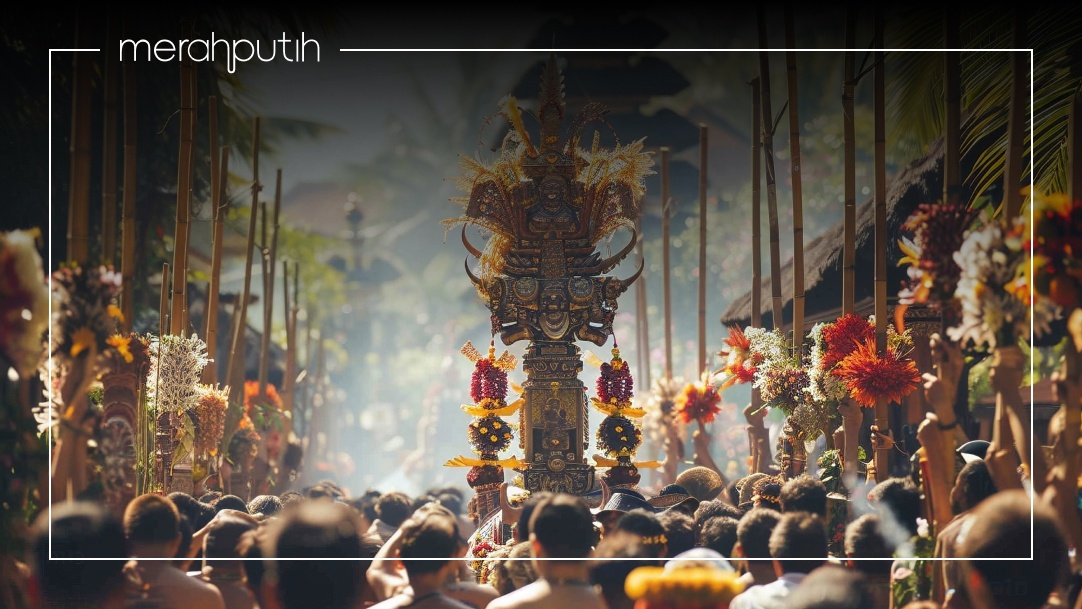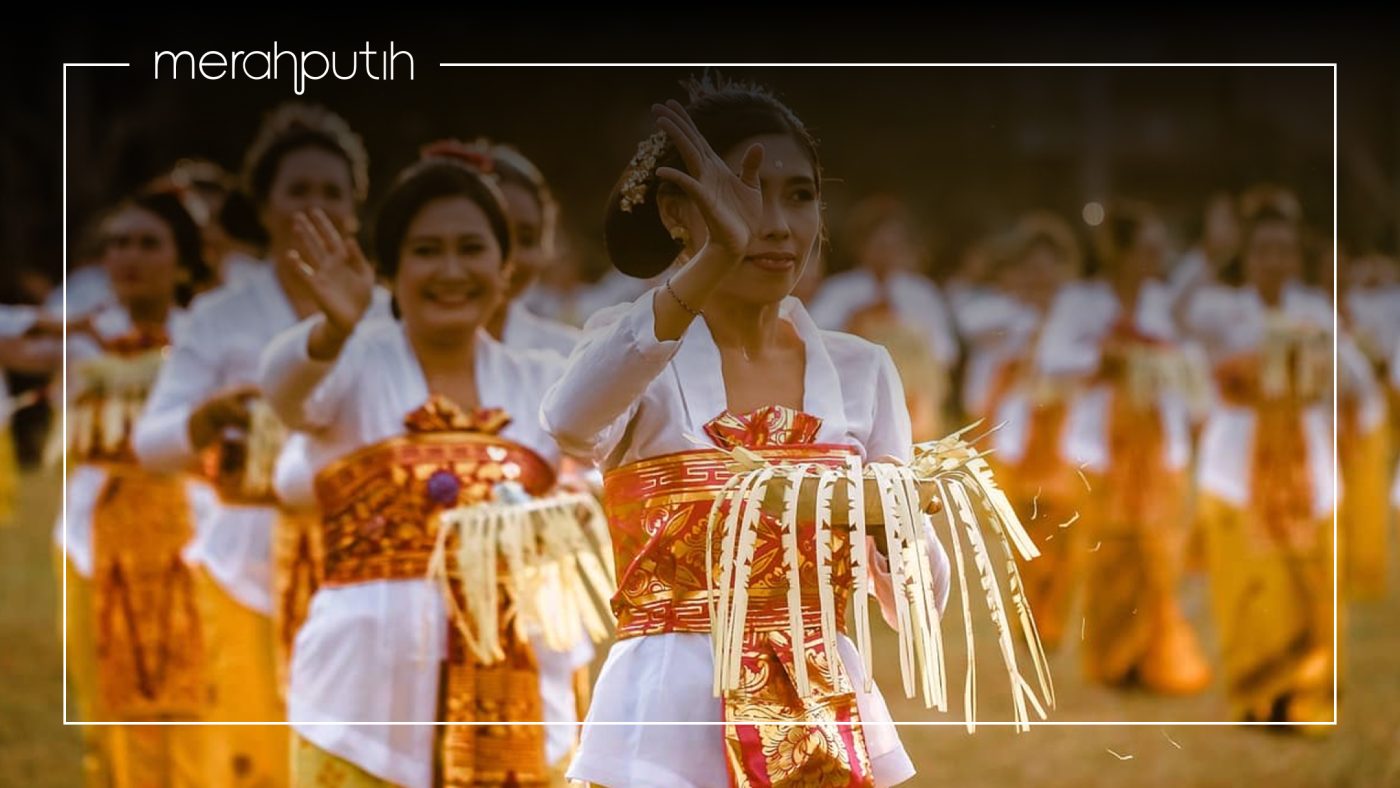Deeply ingrained in the Balinese way of life, Balinese Hinduism places importance not only on how one lives during his time on earth, but also on the afterlife. There is great respect for the ancestors and those who came before. It is also considered the responsibility of the living to ensure that the spirit of the deceased travel safely to the afterlife and become reincarnated.
The grand ritual Ngaben isi a Balinese Hindu cremation ceremony. Also known as Pitra Yadyna or Pelebon, this aspect of Balinese culture is a spectacle to behold. It involves entire villages coming together in multiple traditional processions that end in the burning of the body in a sacred sarcophagus.
Life and the afterlife
Understanding the gravity of Ngaben requires a grasp of how the Balinese view life and man’s place on earth.
Balinese Hinduism believe man comprises of the physical body, the spiritual body, and karma. The physical body resides in nature and is made up of five elements called the Panca Maha Bhuta:
- Pertiwi: earth
- Apah: water
- Teja: fire
- Bayu: wind
- Akasa: ether
These elements form a man’s physical body, which is moved by the spirit or atma. Death is considered the end of the physical body, but the atma lives on into the afterlife.
The Balinese believe in reincarnation; however, it is not an immediate occurrence after death. The soul must first find its way to Moksa, a state of oneness with God. Whether or not one’s soul reaches this state is dependent on his earthly deeds. It is possible for a spirit to end up in Neraka (hell) instead. This is what we understand as karma.
The purpose of Ngaben
Ngaben is a spiritual ceremony meant to ensure that the spirit of the deceased reaches the afterlife in order for them to be reincarnated.
Freeing the spirit of the deceased from its ties to the world
To return to oneness with God, the body and spirit need to be sanctified from anything tainted by the world. This is the first purpose of Ngaben.
Returning the man’s Panca Maha Bhuta
The five elements that make up a man need to be returned to their original source, i.e. the surroundings, in order for the soul to travel through the afterlife without hindrance. This “returning” of the Panca Maha Bhuta is done symbolically through the various processions that take place.
Symbolising farewell
The deceased’s family play key roles within the Ngaben rituals, not only as a display of honour and love, but also to show that they are at peace with the passing of their loved one.
Different kinds of Ngaben
There are five different iterations of Ngaben, each dependent on the treatment of the body.
Ngaben Sawa Wedana
This ceremony involves a whole body that has not been buried and is carried out between 3 to 7 days after death.
Ngaben Asti Wedana
This is the cremation of a body that has already been buried. It involves an additional ceremony called Ngagah, which is where the body is excavated from its grave and its bones are ritualised.
Swasta
If a person passes away overseas or if a body is not discovered, the deceased will be memorialised in this kind of Ngaben.
Ngelungah
This particular ceremony is specifically for the death of a baby who has not yet lost its baby teeth.
Warak Kruron
For miscarriages that occur before the first trimester, the village will carry out Warak Kruron.
Preparing for Ngaben
Bali’s collectivist culture is manifested in the way the whole village takes part in Ngaben. Once the village priest sets the date of the ceremony, the people get to work.
A temporary shelter is usually set up as the centre for Ngaben-related activities. The women are in charge of preparing the various offerings, while men do the heavy work of constructing the sarcophagus or Patulangan.
The Patulangan is always in the shape of a four-legged animal and is dependent on the deceased’s caste and status. Common animals include bulls, calves, lions, and elephants. This casket is then placed in a pagoda-like tower or Bade, decorated to visualise the Balinese universe according to longstanding myths.
The Ngaben rituals
The day of the cremation consists of multiple rituals that are often accompanied by traditional music and dance, with everyone dressing in traditional attire.
Ngulapin
Ngaben begins with the family of the deceased appealing to Shiva, goddess of death and destruction, for permission to conduct the ceremonies. This takes place in the Pura Dalem, a temple dedicated to the worship of Shiva, who is also believed to return man to his original Panca Maha Bhuta.
Meseh Lawang
Afterwards, in the instance of Ngaben Sawa Wedana, a symbolic healing of the body is done at the mouth of the grave.
Mesiram / Mabersih
This is where the body is cleansed, usually done at the deceased’s house or at the grave site.
Ngaskara
During this procession, the family brings offerings for the spirit of the deceased as a way of sanctification.
Ngeseng Sawa
This is the peak of the ceremony where the cremation takes place. The Bade where the Petulangan rests is carried by the villagers to the cremation site in a great procession. The tower is burned with everyone watching. Afterwards, the family gathers the ashes in a ceremony called Nuduk Galih.
Nganyut
Finally, the ashes of the deceased are scattered in the ocean, symbolising the return of man to nature.
Taking part in Balinese culture
Bali’s many traditional rituals are carried out in temples, mountains, and beaches around the island. Watching a Ngaben ceremony is one of the many ways travellers can immerse themselves in Balinese culture.
Exploring Balinese cuisine is another way of engaging with local culture. Food is a major part of religious ceremonies, often appearing in banten or offerings that people would bring to the temple. For a taste of elevated Balinese and Indonesian cuisine, look no further than Merah Putih restaurant. Book a table today with these exclusive gift vouchers and let your taste buds take you on a journey through the rich cultures of Indonesia.
FAQ
Ngaben is a Balinese cremation ceremony that involves the deceased’s family and entire villages coming together in multiple traditional processions. The peak of the ritual is the burning of the body in a sacred sarcophagus. Ngaben is carried out to ensure that the spirit of the deceased travel safely to the afterlife and become reincarnated.
Ngaben is a cremation ceremony that is carried out according to the religious rituals of Balinese Hinduism. It involves many rituals, including the building of a processional structure and sarcophagus for the corpse. Cremation, on the other hand, is carried out by other religions around the world and do not require the traditional rites of a Ngaben.
The Balinese cremate the deceased between 3 to 7 days after death. However, there are also other kinds of Ngaben which involve cremating a body that has previously been buried.
Ngaben is believed to free and sanctify the soul from its ties to the world, return the physical body’s elements back to nature, and signify the family’s acceptance of the deceased’s death.



